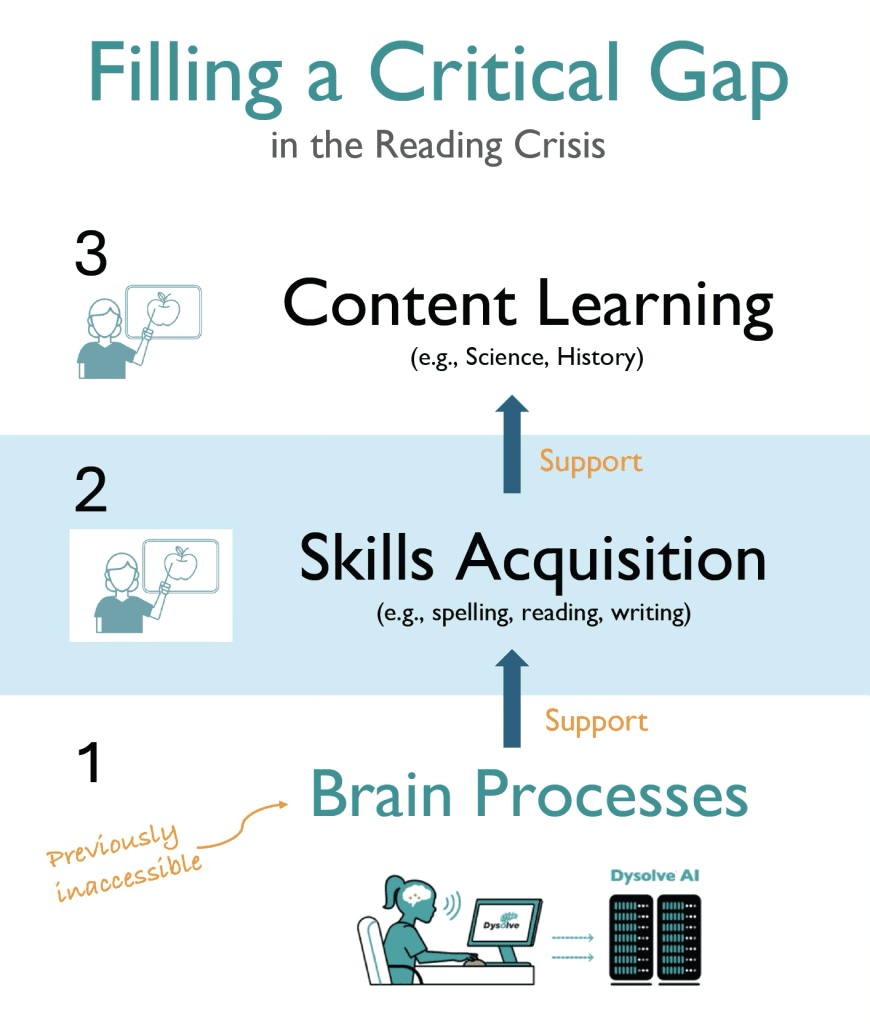Despite affecting 1 in 5 people, dyslexia generally remains a confusing condition for those who have it and those who support them. In my role as a clinical linguist, when I asked parents why they did not act earlier on their children’s dyslexia, they often said that they did not even know where to start, what term to use in their search, or to check for their child for Dyslexia.

In fact, a comprehensive meta-analytic review of dyslexia studies suggest dispensing with this term altogether (Elliott & Grigorenko, 2014). The authors point out the differing opinions about the conceptualization and operationalization of “dyslexia.” Alternate terms that have been suggested include “reading disability” and “reading difficulty.”
But reading difficulty can arise from many causes, such as unfavorable learning environments, physical or mental impairment and so forth. In contrast, dyslexia has been established as a neurological condition. It is not due to the lack of:
- environmental supports
- self-motivation, or
- intelligence
Besides, a problem as significant as dyslexia needs a recognizable name to focus public attention and mobilize effort.

Language Processing
This much we do know from reading research: dyslexia is fundamentally a language processing difficulty. It is not a visual processing difficulty in which letters like “b” and “d” are flipped (see Myths below).
The problem is, language processing difficulties are not confined to dyslexia (or reading) alone. Such difficulties may affect any language function:
| Language Function | Symptoms | Disorder |
| Speaking | Articulation problems | Speech disorders |
| Speech disfluencies | ||
| Misusing words | ||
| Listening | Misunderstanding instructions | Auditory processing disorders |
| Missing parts of messages | ||
| Not retaining messages | ||
| Reading | Misreading words | Dyslexia |
| Not recognizing familiar words | ||
| Reading slowly and haltingly | ||
| Writing | Misspelling words | Dysgraphia |
| Struggling to retrieve words | ||
| Struggling to compose sentences |
Speaking
Individuals may show difficulty with articulation in speech production. Their speech may be disfluent. Or they may not use common words correctly even in familiar contexts. These difficulties are classified as speech disorders on the surface
Listening comprehension
Individuals may misunderstand verbal instructions, miss parts of oral messages or fail to retain them. These difficulties come under disorders involving auditory processing.
Reading
Difficulties that strictly involve reading include misreading common words or failing to recognize even simple, familiar words. Reading fluency is often impacted, with those with dyslexia often reading slowly and haltingly. These symptoms belong with dyslexia, a reading difficulty. But popular checklists of dyslexia symptoms often include those from other language functions, especially writing.
Writing
Individuals may show difficulty writing by misspelling common words and struggling to retrieve words to compose sentences and paragraphs. These difficulties are classified under dysgraphia. Dysgraphia and dyslexia often co-occur in the same individuals
In any one individual (or brain), processing difficulties are often not neatly confined to one language function alone. When difficulties cut across language functions, multiple disorders seemingly co-exist in the same individual.
Different Labels
To add to the confusion, labels differ across fields. One reason is the history of the study of dyslexia. It was originally thought to be a vision problem, leading struggling readers to seek out eye doctors. Even though dyslexia is now recognized as a language problem, many schools still require parents to get a diagnosis from their physicians before providing special services. Dyslexia is considered a learning “disorder” in the medical field and a learning “disability” in education. The disjuncture between dyslexia diagnosis and intervention persists to this day.
Presently, 40 states in the U.S. mandate dyslexia screening and 30 states mandate intervention, owing to growing recognition of its impact on public education and society in general. Approximately half of U.S. prison inmates have a learning disability. Although schools are responsible for intervention, some educators still hesitate to use the word “dyslexia” for various reasons. This has led states like New York to issue statements assuring educators that they can do so.
Practical Matters
Who Diagnoses Dyslexia?
There are 3 main ways to check children at risk for Dyslexia:
- Dyslexia screeners – these are brief assessments to indicate whether a student is at risk. Screeners do not provide a diagnosis of dyslexia. Many schools now administer these, usually online for all students in the lower grades.
- Neuropsychological evaluations – these are lengthy standardized assessments using commercially available test batteries administered one-on-one by certified specialists. These may cost between $5,000-10,000 per person.
- AI – individualized diagnostic tests generated by Dysolve AI that can check & treat Dyslexia. This new method identifies the language processing difficulties that cause the reading difficulty, or dyslexia, to manifest on the surface.

Who Treats Dyslexia?
Intervention providers differ from those above except for the AI solution:
- Reading/dyslexia specialists or interventionists – these are often certified teachers trained to implement a certain approach such as the multisensory, structured literacy, Orton-Gillingham methodology. This is a compensatory approach to help struggling readers cope with their dyslexia. Their reading difficulty generally remains throughout school.
- Ed tech programs – these are usually online programs focused on various aspects of literacy development. These are often used to supplement teacher instruction.
- AI – individualized interventions are generated by the same patented AI technology. The language processing difficulties identified during diagnostic assessment are then corrected during intervention. This is a corrective approach to help struggling readers clear their difficulty.
The third method with patented AI represents a new way to get to a level that was inaccessible previously. Think of 3 tiers. The bottom tier is brain processing. Brain processes support the acquisition of skills in the middle tier. Skills include spelling and reading. These skills support the top tier, the acquisition of subject matter such as science and history. Providers 1 and 2 above operate in the middle tier. AI works on brain processing in the bottom tier by increasing efficiency. When language is processed efficiently, skills acquisition can proceed effectively.
Myths about Dyslexia
Now with the concept of dyslexia clarified, we can address some common myths.
Myth 1 – Dyslexia is a lifelong condition
Dyslexia need not be lifelong if there is a method to identify the language processing difficulties underlying a person’s dyslexia and correct them. Such a method has already been commercialized and involves the use of patented AI technology. Cases of successful correction have been reported on NBC, CBS and Fox.
Myth 2 – People with dyslexia see letters backwards
Contrary to popular belief, people with dyslexia do not see mirror images of letters. Dyslexia is not a visual-processing problem. But some people with dyslexia do indeed mix up b and d. This is because b and d are very close in sound. People with dyslexia lack phonemic awareness, i.e., sensitivity to the sounds of language. Without this awareness, they may have difficulty tying letters to sounds.
Myth 3 – Only a tiny fraction of struggling readers have dyslexia
Dyslexia is a reading difficulty that affects a sizable population (20%). Reading research shows a core group of “non-responders” to intervention who chronically fail reading assessments. Many schools do not even provide intervention to all students who fall below the 25th percentile annually. Thus, only a fraction of struggling readers with dyslexia receive intervention.
Myth 4 – Effective dyslexia interventions are expensive
Methods that require highly trained specialists to work one-on-one or in small groups are expensive, as do compensatory approaches that require long-term support. However, corrective technology solutions such as Dysolve AI can be inexpensive, especially when long-term support is no longer necessary. Dysolve AI also Efficacy is thus not directly related to cost.
Myth 5 – Audiobooks and text-to-speech are sufficient for addressing dyslexia
Reading difficulty may be part of a broader problem with language processing, which can affect other functions such as speaking and listening comprehension. Therefore, using aids to skirt around the reading difficulty is not enough, when other language functions are also affected. Moreover, we spend a large part of our waking hours processing language in all its forms, and not just in written texts.




